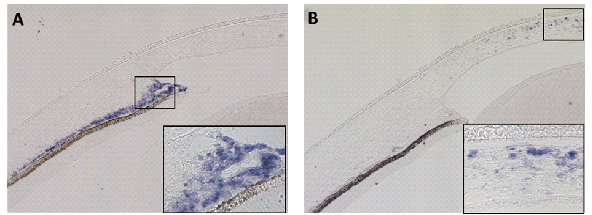The cornea is a transparent and avascular tissue located at the most anterior part of the eye. Since the cornea provides refractive power for a proper optical performance, avascularity in this tissue is crucial. During development, the ‘angiogenic privilege’ of the cornea is established and maintained by a strict balance between angiogenic factors, which allow blood vessels to expand around the limbus region while preventing vessels from entering the cornea.
Angiogenic factors allow growing tissues to communicate with blood vessels in order to direct their expansion in an appropriate manner. A signaling event provided by an individual angiogenic factor may result in a growth permitting (proangiogenic) or growth prohibiting (antiangiogenetic or angiostatic) behavior relative to the source of the factor. In combination, multiple angiogenic factors can communicate specific instructions that elicit an equilbrium response. Angiogenic factors that promote corneal avascularity include members from semaphorin, netrin, and growth factor families.

Chemokines, a subpopulation of cytokines that control cell migration, may act as angiogenic factors. Based on the number and location of two conserved cysteine residues, chemokines can be divided into CCL, CXCL, XCL and CX3L groups. Moreover, depending on the presence or absence of three conserved amino acids (Glu-Leu-Arg; ELR) CXCL chemokines can be sub classified into ELR (+) with angiogenic activity or ELR (-) which are considered to be angiostatic factors.
In our lab, we are interested in elucidating the role of angiogenic factors and chemokines in maintaining cornea avascularity during development. Despite the considerable number of studies showing the significance of angiogenic factors and chemokines in vascular patterning, less is known about the function of these molecules during eye development. Understanding the mechanism of corneal avascularity during development seems crucial to successfully treat diseases associated with corneal vascularization such as corneal graft rejection keratitis, stromal ulceration and contact lens-related hypoxia.